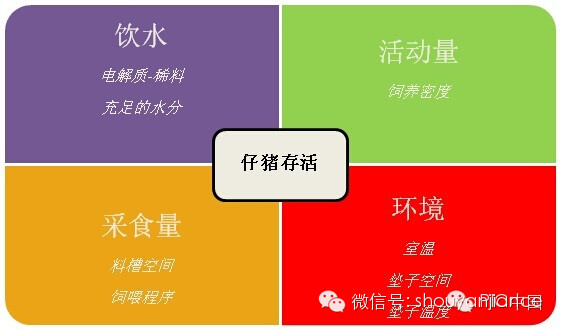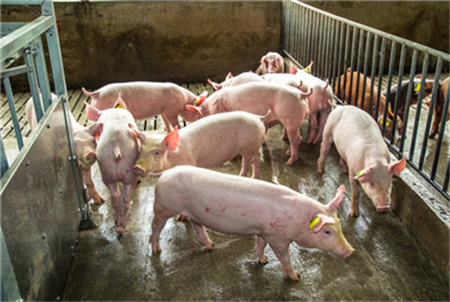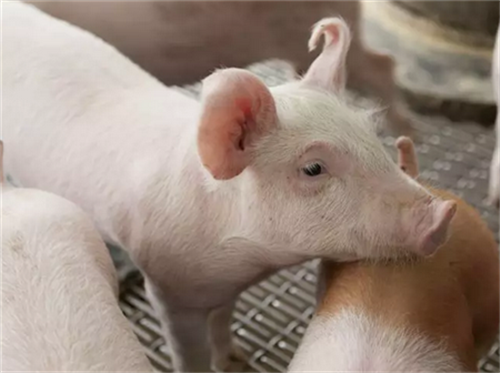Constant rhythm | the latest research progress of porcine epidemic diarrhea
PED is caused by a coronavirus and is characterized by severe watery diarrhea in the early stages of the disease and high mortality in young piglets. Eye symptoms include vomiting, loss of appetite, diarrhea, weight loss and death. Autopsy showed that there was undigested milk in the stomach and the intestinal wall became thinner and almost transparent. The mortality rate of piglets over 10 days old is about 10%, but the mortality rate of piglets within 5 days old can reach 100%.
In Asia, it is recorded that PED first broke out in South Korea in the 1890s and quickly spread to other countries, and now it has become widely popular in many countries, including many pig farms that try to coexist with it or try to isolate it through biosafety. The PED outbreak was first confirmed in the United States on May 13, 2013, and the disease has now spread to 30 states
The American pig industry has suffered extremely heavy losses. In 2013 alone, the United States estimated that about 3 million piglets were lost due to PED, and the loss is expected to reach 6 million by 2014. Although some of the losses have been offset by higher production efficiency and increased slaughtering weight by producers, it has caused a rise in pork prices in recent months and affected exports. The similarity between PED strain isolated in the United States and Anhui strain in China is 99%.
There were many reports about PED at the World Pork Exhibition in May 2014. The head of research on pig health at the National Pork Council reported on the latest research progress and disease trends of PED in the United States. They found that similar to the situation in Asia, piglets may develop clinical symptoms after 2-3 days of exposure to the virus, and the incubation period will be further shortened as the viral load increases. In Asia, piglets born one day after the outbreak of PED develop diarrhea. According to the report, pigs infected with PED began detoxification in 1-2 days, reached a peak in 5-6 days, and lasted for 35 days. Although there have been many outbreaks of PED disease in the United States in a very short period of time, the route of transmission of PED is still fecal-oral transmission, and it has not been replicated under laboratory conditions through aerosol detoxification or transmission. However, the virus may spread among pig farms with the wind. Studies on viral stability in the laboratory of the University of Minnesota showed that PED virus could survive for 14 days in 40 ℃ to 50 ℃ fresh feces, 7 days in 60 ℃, 14 days in 25 ℃ fecal water, and at least 28 days in-20 ℃ to 3.89 ℃ fecal water (only 28 days in the experiment). At present, feed transmission is suspected to be the main route of PED outbreak transmission in the United States, and PED virus has been found to survive in dry feed for 1-2 weeks.
PED Control Strategy after weaning in PED infected Pig Farm
PIC proposed a post-weaning care strategy for PED to help weaned piglets that may be infected with PED survive and grow better in the event of an PED outbreak or epidemic.
The piglets infected with PED reduced nutrient absorption due to damage to the small intestine and needed some time to recover. Due to the decrease of enzyme activity, small intestinal injury will make it difficult for piglets to digest milk food or feed. Therefore, it is good for them to survive by letting them transition from milk-derived food as soon as possible. In addition, we should also consider other points to control PED infection.
4 key points of piglet nursing
We need to pay attention to these four priorities to improve the survival rate of piglets: drinking water, food intake, activity and environment.

Drinking water
We must ensure that the piglets are provided with enough water so that they can meet the needs of timely replenishment of lost body fluids in addition to their normal drinking water needs. Every 10 pigs need a source of water, and a 20-pig pen needs at least 2 nozzles or bowls. The flow rate should be at least 500 ml / min and the pressure should be less than 20 psi (too much pressure will make it difficult for pigs to drink water). In order to "teach" piglets where to find water, keep dripping or leaking water spouts / bowls for the first few hours.
It is beneficial to provide additional sinks for piglets when weaning is transferred to conservation. Electrolytes should be added for the first 3-5 days. A common problem in pig farms is that there are more than two nozzles in the weaning pen, but installed at different heights, the low one is for piglets to drink water, and the other is for larger pigs. This configuration is a problem for newly weaned piglets, which means that most piglets may have only one nozzle. The height of the nozzle should not exceed the shoulder of the smallest piglet in the column. The nozzle with adjustable height will better meet the demand because it can be adjusted according to the situation of the pig herd in the pen.
Amount of activity
The key is to get up the piglets many times a day to stimulate them to maintain the activity pattern of getting up and lying down many times in the birth bed environment. On the birth bed, piglets suck milk regularly, about 2 hours a cycle. Facts have proved that in the first 4 days after weaning, piglets can be driven every 2-3 hours according to this cycle, which can make piglets learn to drink and eat more quickly. Piglets can be trained to eat with dilute feed (wet feed) or a small amount of feed (scattered feeding).
Maximize the number of pigs per column for the first 2 weeks, but make sure there is enough space for each piglet and avoid overloading.
A good environment
What is a "good" environment? A good environment can be defined as an environment in which dry and comfortable piglets can be seen. Diarrhea or dehydrated piglets usually need higher temperatures, different types of floors need different temperature settings and need to be adjusted in time:
If a cushion is used, the temperature under the intermediate insulation lamp should be 35 ℃, with a space of 0.05m ²per piglet. If the cushion is wet, it must be turned over or replaced. If the floor is wet and the humidity is more than 65%, you can temporarily increase the temperature and reduce the fan speed. Maintain the starting temperature for a week after entering the column.
Feed
As mentioned earlier, if piglets can start feeding quickly and regularly, it will significantly improve the growth performance of weaned pigs. It has been proved that providing dilute material (wet material) several times a day will have a very good effect. Here is an example of a formula in which every 15 piglets should eat 227 grams of feed and 750 milliliters of water within 1 hour.
For every 30-40 piglets, 0.45 kg of feed was sprinkled on the mat at least 4 times a day. The purpose of spreading is to stimulate feeding rather than actual feeding. When the piglets are adapted to feed and feed, they will feed from the trough. Check the coverage of the trough chassis to ensure adequate feed and minimum feed pulverization and waste. Newly weaned piglets must be fed fresh feed and the tray should be cleaned twice a day with a coverage rate of 50%.
Bio-Safety
Biosafety measures must be strictly implemented to minimize the spread of disease between bars and houses. All facility areas contaminated by PED must be quarantined. Separate groups of people are needed to work in these areas. Getting in and out of the shower is also important. Transportation is seen as a major factor in the rapid spread of PED in the United States, and after transportation, vehicles must be cleaned, dried and disinfected. Dead pigs must be incinerated or composted. When the enclosure is empty, ensure that the facility is cleaned strictly, remove organic materials and remove faeces. All clothes must be changed or washed and dried strictly.
These four points will help manage newly weaned piglets with or without PED infection and should be implemented in all production systems.
We hope to learn more from others, just as they learn from us.
Related
- On the eggshell is a badge full of pride. British Poultry Egg Market and Consumer observation
- British study: 72% of Britons are willing to buy native eggs raised by insects
- Guidelines for friendly egg production revised the increase of space in chicken sheds can not be forced to change feathers and lay eggs.
- Risk of delay in customs clearance Australia suspends lobster exports to China
- Pig semen-the Vector of virus Transmission (4)
- Pig semen-the Vector of virus Transmission (3)
- Five common causes of difficult control of classical swine fever in clinic and their countermeasures
- Foot-and-mouth disease is the most effective way to prevent it!
- PED is the number one killer of piglets and has to be guarded against in autumn and winter.
- What is "yellow fat pig"? Have you ever heard the pig collector talk about "yellow fat pig"?



